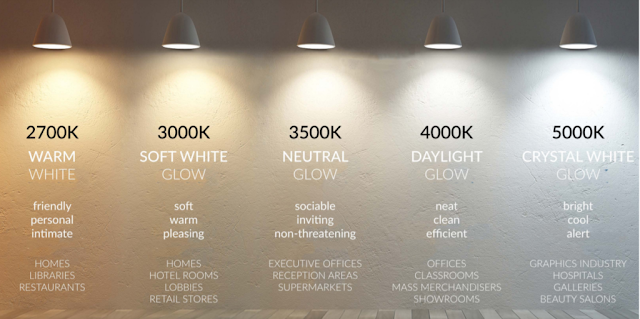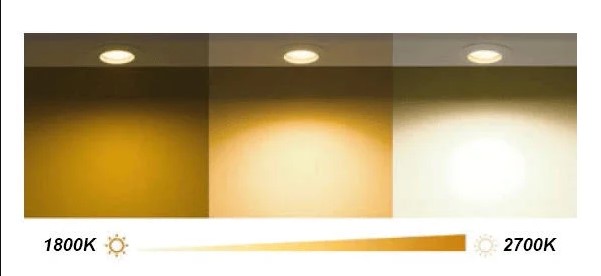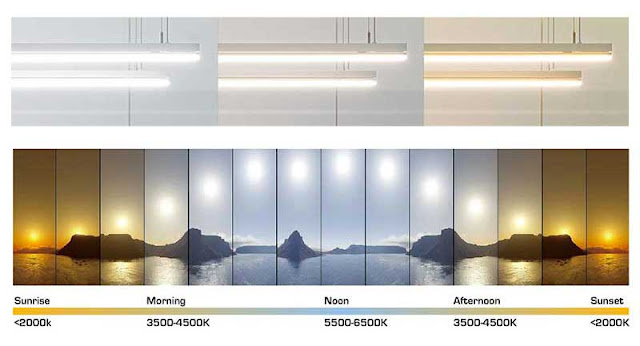Today’s LED color tuning technology allows customers to change the color of light at any moment after installation. Color tuning enables you to tailor illumination to your personal preferences or specific application requirements.
The user can, for example, program the LED light fixture to follow the sun's natural east-west path throughout the day or select from several presets (i.e., dawn, morning, midday, afternoon, and evening).
Interactive color adjusting solutions like color tuning can harvest sunshine while also controlling color temperature throughout the day, transitioning from daylight to cool white to warm white as the day passes.
Users can adjust lighting fixtures in their homes or offices using the following three different color-tunable technologies:
- The temperature range is 2700K to 1800K.
- It looks like incandescent or candlelight.
- As the light dims, dim-to-warm products grow increasingly warmer in tone, similar to a flame.
- These are best used in restaurants, hotel lobbies, guest rooms, ballrooms, theaters, and private residences.
- The temperature range is 2700K to 5000K.
- It imitates daylight.
- Increase the kelvins in tunable-white products to replicate daylight by adding blue-toned colors and intensity.
- These are suitable for lighting in industrial and medical offices, museums, and art studios.
- RGBW (Red, Green, Blue, White)
- Provides a full-color wheel as well as customizable white.
- RGB, RGBA, RGBW, and color-shifting lighting fixtures use primary colors to produce the majority of hues across the color spectrum.



Comments
Post a Comment